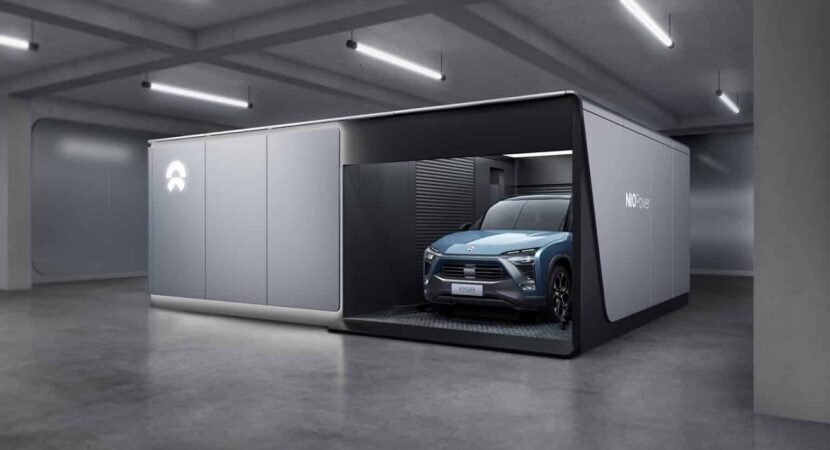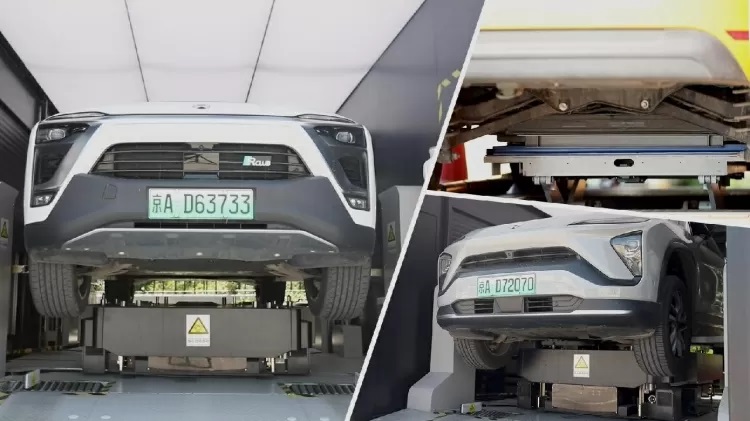
The Chinese NIO has just announced new technology for changing electric car batteries. the ideia is that the exchange of batteries match the filling time at gas stations.
Nio, one of China's giants in the electric car segment, recently announced that it will expand its network of battery change in the Asian country. There will be more than 2.300 points installed in busy places. It is worth noting that an electric car can take hours in the socket to recover energy, depending on the charging technology used.
To get around this impasse, NIO intends to change the models' batteries, significantly reducing downtime at charging stations.
Understand how the technology that recharges electric cars in seconds works
Basically, the posts take less than 5 minutes to extract the worn unit from under the vehicle and install a new pack. When replacing, the car is moved slightly to the sides so that the complete alignment of the new battery is guaranteed.
The car is then raised by around 50 millimeters for the installation of the new component, which is preloaded to 90% to extend the life of the cells. According to journalist Richard Ingram, ten laser-guided screws secure the battery to the vehicle with just a few clicks and jabs.

Each NIO station has 13 batteries preserved under controlled temperature conditions. Norwegian customers who choose not to purchase the package and subscribe to the company's plan are entitled to two free monthly exchanges, or the equivalent kWh of charging.
According to information, at the time it was launched, in mid-2021, the brand charged 10 euros for battery replacement, plus 20 euro cents per additional kWh. Until the end of the decade, the company plans to spread 5 thousand jobs battery replacement for electric cars in China, USA and Europe. A thousand stations will be installed outside their country of origin.
NIO also develops ultra-fast charger
According to Nio, the exchange technology can now be considered faster than waiting for a combustion vehicle to be filled at the gas station. The method also works in places that do not yet support the installation of more powerful chargers.
For now, the main disadvantage is the cost of maintenance. The system doesn't come cheap for the company, which seeks to keep all stations in operation and always supplied with charged batteries.
Last year, the electric car company launched its own network of ultra-fast chargers. According to the company, the technology will be able to provide up to 500 kW, being superior to rivals like GAC Aion with its 480 kW charger. The company's product has the capacity to generate a maximum current of 650 amperes.
China plans to manufacture its own batteries for electric cars
NIO has yet to say how fast the new technology could charge its electric cars, especially as none of them seem to be able to handle more than 90kW currently.
The manufacturer plans to launch a 150 kWh solid-state battery pack for its models, so that it will be possible to charge at 500 kW. Therefore, it will be possible to use the full potential of the charger which, at the time, implied that NIO made the announcement in order not to be behind Chinese rivals in the near future.
In addition to the charger for electric cars, the Xpeng also released its 480 kW ultra-fast charger at the time, putting pressure on NIO to match this power.
NIO has announced that, starting in 2024, it will begin manufacturing its own 800-volt electric car batteries, which are unlikely to be solid-state. However, these components should generate much higher loading speeds than the current ET7 or ES8.
Source: Tilt UOL











There is already a language translation app…
Developed countries now need a helping hand…
I've never seen a website publish so much zucchini...
It must be sold to the Australians, nation…
Much better than playing a lot…
Very interesting, but there is so much invasive propaganda…
I would love to, but being released here the vlr would be…
I doubt it will make 45/lts